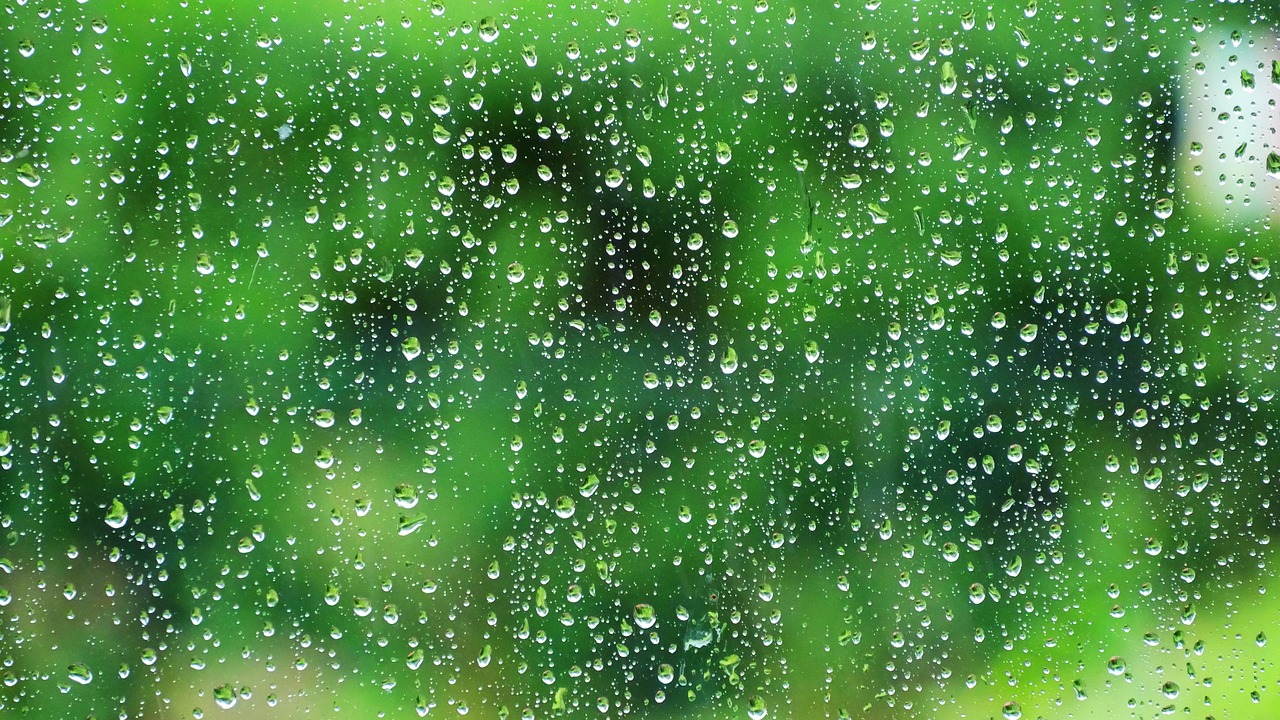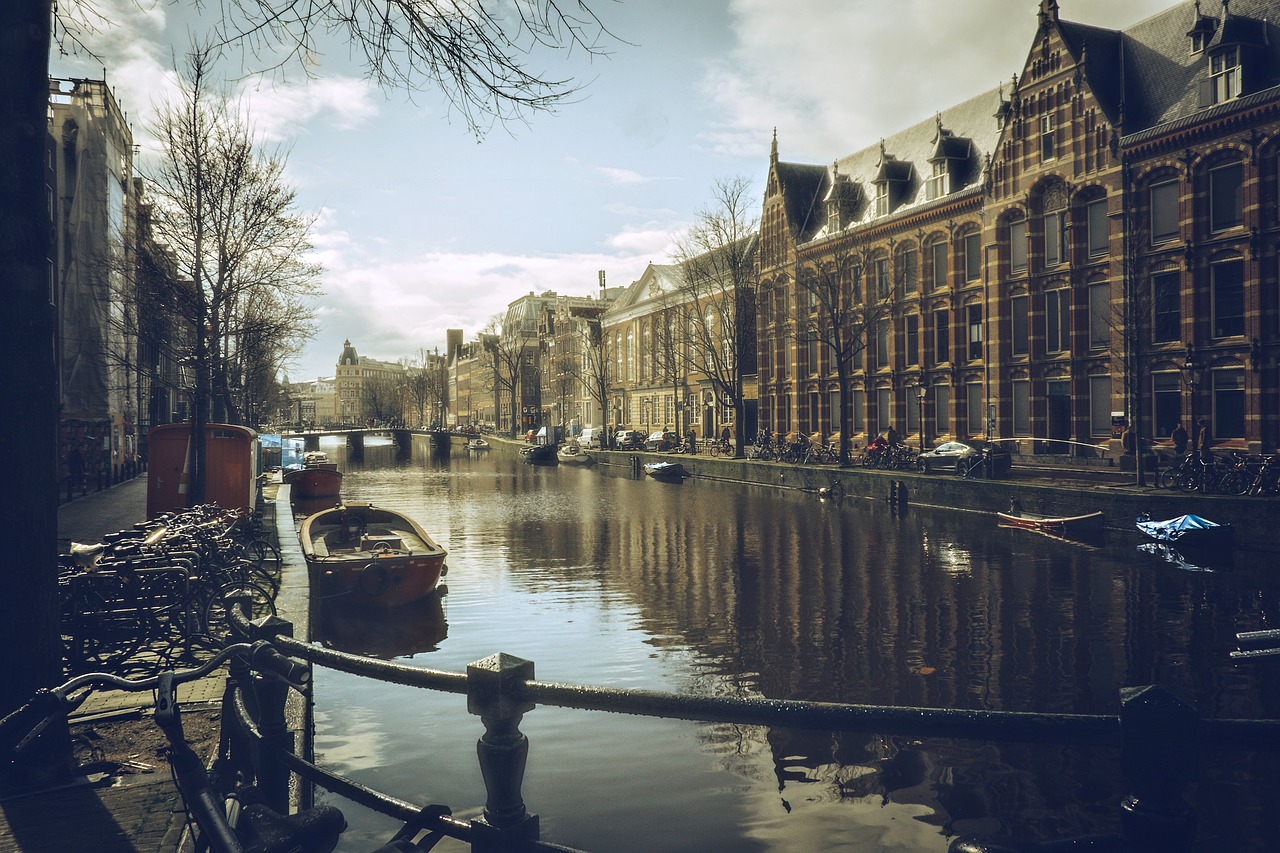Strategies for Urban Water Management
Urban water management is a pressing issue in today's rapidly growing cities. As populations swell and climate change intensifies, the demand for clean and reliable water sources becomes more critical than ever. The challenges of pollution, scarcity, and outdated infrastructure create a perfect storm for urban planners and policymakers. However, the good news is that there are a plethora of innovative strategies and sustainable practices that can be employed to tackle these issues head-on. By adopting a multifaceted approach, cities can ensure a reliable water supply while also promoting environmental stewardship and community engagement.
One of the primary strategies for effective urban water management is the implementation of sustainable practices. These practices not only help conserve precious water resources but also protect local ecosystems. For instance, using green infrastructure—like permeable pavements and green roofs—can significantly reduce stormwater runoff, allowing rainwater to seep into the ground rather than overwhelming drainage systems. This not only helps in maintaining the natural water cycle but also enhances the aesthetic appeal of urban spaces.
Moreover, effective urban water management requires a keen understanding of the local context. Each city has its unique challenges and opportunities, making it essential to tailor strategies to fit specific needs. For example, cities located in arid regions may prioritize water recycling and desalination technologies, while those in flood-prone areas might focus on improving drainage systems and flood management strategies. The key is to adopt a holistic approach, integrating various methods to create a robust framework for managing urban water resources.
Another critical component of urban water management is the use of innovative technologies. With the advent of smart sensors and data analytics, cities can monitor their water systems in real-time, leading to more efficient management practices. For instance, smart water grids can detect leaks and inefficiencies, allowing for quick repairs and reducing water loss. This not only saves water but also cuts down on operational costs, making it a win-win for municipalities.
In addition, community engagement plays a pivotal role in the success of urban water management strategies. By involving local residents in decision-making processes, cities can foster a sense of ownership and responsibility towards their water resources. Education and outreach programs are essential in this regard, as they empower individuals with the knowledge and tools needed to conserve water in their daily lives. When communities understand the importance of sustainable water practices, they are more likely to adopt them, leading to a collective effort in preserving this vital resource.
In conclusion, the path to effective urban water management is paved with challenges, but it is also filled with opportunities for innovation and collaboration. By prioritizing sustainable practices, leveraging technology, and engaging communities, cities can create a resilient water management system that not only meets the needs of today but also prepares for the uncertainties of tomorrow.
- What are the main challenges in urban water management?
Urban water management faces challenges such as pollution, water scarcity, aging infrastructure, and climate change impacts. - How can technology improve urban water management?
Technologies like smart sensors and data analytics enhance monitoring, reduce waste, and improve water quality. - Why is community engagement important in water management?
Engaging communities fosters awareness, encourages responsible usage, and leads to culturally relevant solutions. - What are some sustainable practices for urban water management?
Sustainable practices include rainwater harvesting, green infrastructure, and water recycling.

Importance of Sustainable Water Practices
Sustainable water practices are not just a trend; they are essential for the survival of urban environments. Imagine living in a city where clean water is a luxury rather than a basic necessity. Scary, right? This reality is becoming more common as urban populations grow and climate change wreaks havoc on our natural resources. By adopting sustainable practices, we can conserve water, protect our ecosystems, and ensure that clean water remains available for future generations.
One of the most pressing reasons to embrace sustainable water practices is the alarming rate at which our water resources are depleting. Urban areas often face challenges such as pollution, scarcity, and inadequate infrastructure. With the increasing demand for water, it’s vital to implement strategies that not only address these issues but also promote the responsible use of water. Sustainable practices can help cities become more resilient, allowing them to withstand the impacts of climate change.
Moreover, sustainable water management has significant benefits for our ecosystems. When we use water responsibly, we help maintain the delicate balance of aquatic habitats. For example, reducing runoff through green infrastructure can improve water quality and support biodiversity. This is crucial for preserving the natural world that many urban dwellers often overlook.
Another key aspect of sustainable water practices is their role in community health. Access to clean water is a fundamental human right, and by promoting sustainable practices, we ensure that all community members can enjoy this right. This can lead to a healthier population, reduced healthcare costs, and increased productivity. In fact, studies have shown that communities with sustainable water management practices tend to have better overall health outcomes.
To illustrate the importance of sustainable water practices, consider the following table that highlights some of the key benefits:
| Benefit | Description |
|---|---|
| Resource Conservation | Reduces the demand on freshwater sources, ensuring long-term availability. |
| Environmental Protection | Helps maintain ecosystems and biodiversity by minimizing pollution and runoff. |
| Community Health | Improves public health outcomes by ensuring access to clean water. |
| Economic Savings | Reduces costs associated with water treatment and infrastructure maintenance. |
In conclusion, the importance of sustainable water practices cannot be overstated. They are not merely beneficial; they are essential for creating resilient urban environments that can thrive in the face of challenges. By conserving resources, protecting ecosystems, and ensuring the availability of clean water, we are paving the way for a healthier, more sustainable future. Are you ready to take action and be part of this vital change?
- Why are sustainable water practices important? Sustainable water practices help conserve resources, protect ecosystems, and ensure long-term availability of clean water.
- How can communities engage in sustainable water practices? Communities can engage through education, outreach programs, and by participating in local water management initiatives.
- What are some examples of sustainable water practices? Examples include rainwater harvesting, smart water grids, and green infrastructure for stormwater management.

Innovative Technologies in Water Management
In the ever-evolving landscape of urban water management, innovative technologies are paving the way for more efficient and sustainable practices. These advancements are not just buzzwords; they represent a significant shift in how cities can manage their water resources. Think of it as upgrading from a flip phone to a smartphone—suddenly, everything is more interconnected, efficient, and user-friendly. With the increasing pressures of population growth and climate change, it’s essential that urban areas adopt these technologies to ensure a reliable and clean water supply.
One of the most exciting developments is the rise of smart water grids. Imagine a network that doesn't just distribute water but actively monitors its flow, quality, and usage in real-time. Smart water grids utilize digital technology to integrate traditional water systems with advanced sensors and data analytics. This means that city planners can identify leaks almost instantaneously, reducing water loss and ensuring that every drop counts. By optimizing resource allocation, these grids not only improve service delivery but also enhance the overall resilience of urban water systems.
Another groundbreaking technology is the use of remote sensing applications. Picture satellites orbiting the Earth, gathering crucial data on water quality and availability without the need for invasive methods. This technology allows for the monitoring of water bodies, detecting pollution levels, and assessing the health of aquatic ecosystems from afar. With the data collected, decision-makers can respond swiftly to emerging challenges, ensuring that urban water systems remain healthy and sustainable.
Furthermore, the implementation of data-driven decision making in urban water management is revolutionizing how cities operate. By leveraging real-time data, city planners can make informed decisions that directly impact resource management. For instance, if a particular area shows an unusual spike in water usage, planners can investigate and address potential leaks or inefficiencies before they escalate into larger problems. This proactive approach not only saves water but also minimizes costs associated with emergency repairs.
Additionally, rainwater harvesting systems are gaining traction as a practical solution for urban water conservation. These systems capture and store rainwater, providing a supplementary water source for irrigation, flushing toilets, and even for some household uses. By reducing reliance on municipal supplies, cities can alleviate some of the strain on their water systems, especially during dry spells. Implementing rainwater harvesting not only promotes sustainability but also encourages communities to engage in water conservation practices actively.
In summary, the integration of innovative technologies in urban water management is not merely a trend; it’s a necessity for building resilient cities. These advancements are transforming how we think about water distribution, conservation, and quality management. As urban areas continue to grow, embracing these technologies will be crucial for ensuring that we have enough clean water for future generations.
- What are smart water grids?
Smart water grids are advanced systems that use digital technology to monitor and manage water distribution in real-time, optimizing resource allocation and reducing leaks. - How does remote sensing benefit water management?
Remote sensing enables the collection of data on water quality and availability from a distance, aiding in informed decision-making and timely responses to water-related challenges. - What is the role of data analytics in water management?
Data analytics allows city planners to make informed decisions based on real-time data, leading to more efficient resource management and proactive measures. - How does rainwater harvesting work?
Rainwater harvesting systems capture and store rainwater for various uses, reducing reliance on municipal water supplies and helping to manage stormwater runoff.

Smart Water Grids
The concept of is revolutionizing the way we manage urban water resources. Imagine a system where water flows not just through pipes, but also through a network of digital intelligence. These grids integrate traditional water supply systems with cutting-edge technology, allowing for real-time monitoring and management. This means that city planners and water managers can keep an eye on every drop of water, ensuring optimal distribution and minimizing waste. But how does this work in practice?
At the heart of smart water grids are smart sensors that continuously collect data on various parameters such as flow rates, pressure, and water quality. This data is then analyzed using advanced algorithms to predict demand, detect leaks, and identify potential contamination issues before they escalate into major problems. By leveraging this technology, cities can not only improve the efficiency of their water distribution systems but also enhance the overall quality of the water supplied to residents.
One of the standout features of smart water grids is their ability to reduce leaks. Traditional water systems often suffer from significant water loss due to aging infrastructure and undetected leaks. According to the American Society of Civil Engineers, approximately 6 billion gallons of treated water are lost every day in the United States alone due to leaks. Smart water grids address this issue head-on by providing real-time data that pinpoints leak locations quickly, allowing for faster repairs and less wasted water.
Moreover, smart water grids facilitate better service delivery. With the ability to monitor water usage patterns, utilities can adjust supply dynamically to meet demand. This is particularly crucial during peak usage times, such as during summer months when water consumption spikes. By having a system that can adapt in real-time, cities can ensure that their residents have access to water when they need it most.
The benefits of implementing smart water grids extend beyond just efficiency. They also contribute to sustainability goals by reducing energy consumption associated with water pumping and treatment. For instance, by optimizing water flow and reducing the need for extensive infrastructure repairs, cities can lower their carbon footprint significantly.
In conclusion, smart water grids represent a transformative approach to urban water management. By combining technology with traditional practices, cities can create a more resilient and efficient water supply system. As urban populations continue to grow, the need for innovative solutions like smart water grids becomes increasingly critical. The future of urban water management is not just about managing resources; it's about using technology to enhance our ability to provide clean, safe water for all.

Remote Sensing Applications
Remote sensing technologies are revolutionizing the way we understand and manage urban water resources. By utilizing satellite imagery and aerial data collection, cities can monitor water quality and availability with unprecedented accuracy. This approach not only enhances our ability to track changes in water bodies but also allows for timely interventions when issues arise. Imagine having a bird's-eye view of your city's water systems, where you can detect pollution sources or assess the impact of heavy rainfall on local reservoirs. It's like having a superpower for urban water management!
One of the most significant advantages of remote sensing is its ability to provide real-time data. This capability is crucial for urban planners and water management authorities, as it enables them to make informed decisions quickly. For instance, if a sudden spike in water turbidity is detected, authorities can mobilize resources to investigate and mitigate potential contamination. This proactive approach not only protects public health but also conserves valuable resources by preventing further degradation of water quality.
Moreover, remote sensing applications can be categorized into several key areas:
- Water Quality Monitoring: Sensors can detect pollutants and measure parameters such as pH, turbidity, and temperature, providing a comprehensive overview of water health.
- Hydrological Modeling: By analyzing data from various sources, cities can predict water flow patterns, helping to manage floods and droughts effectively.
- Infrastructure Assessment: Remote sensing can identify leaks and inefficiencies in water distribution systems, allowing for targeted repairs and upgrades.
In addition to these applications, remote sensing plays a vital role in disaster response. During extreme weather events, such as hurricanes or heavy storms, real-time data can guide emergency services to areas most at risk. This capability not only saves lives but also enhances the resilience of urban water systems against climate change impacts.
As we continue to integrate remote sensing technologies into urban water management, the potential for innovation seems limitless. Cities are now more equipped than ever to tackle challenges related to water scarcity and pollution, ensuring a sustainable and reliable water supply for future generations. The future of urban water management is bright, and with remote sensing at the forefront, we can look forward to smarter, more efficient systems that benefit everyone.
What is remote sensing? Remote sensing refers to the process of collecting data about an object or area from a distance, typically using satellites or aircraft. This technology is used extensively in environmental monitoring, including water quality assessment.
How does remote sensing improve water management? Remote sensing enhances water management by providing real-time data on water quality, availability, and infrastructure condition, allowing for timely interventions and better decision-making.
Can remote sensing help in disaster management? Yes, remote sensing plays a crucial role in disaster management by offering real-time data during extreme weather events, helping authorities respond effectively to protect communities.

Data-Driven Decision Making
In the fast-paced world of urban water management, has emerged as a game-changer. Imagine a city where every drop of water is accounted for, where leaks are detected before they become a flood, and where resource allocation is as precise as a surgeon's scalpel. This is not just a dream; it is the reality that data analytics is creating for urban planners and water managers.
Utilizing advanced analytics, cities can now harness vast amounts of data collected from various sources, including smart sensors, weather forecasts, and historical usage patterns. This data is then synthesized into actionable insights, allowing decision-makers to respond swiftly to emerging challenges. For instance, if a particular area is experiencing an unusual spike in water usage, it can trigger an immediate investigation to identify potential leaks or inefficiencies.
Moreover, the integration of data analytics fosters a more proactive approach to water management. Instead of waiting for problems to arise, city planners can anticipate issues and implement solutions before they escalate. The benefits are multifaceted:
- Enhanced Efficiency: By analyzing consumption patterns, cities can optimize their water distribution systems, ensuring that every neighborhood receives its fair share of resources.
- Improved Water Quality: Continuous monitoring of water quality data allows for immediate responses to contamination events, safeguarding public health.
- Cost Savings: By reducing waste and improving operational efficiency, cities can save significant amounts of money, which can be redirected to other essential services.
Furthermore, the advent of machine learning and artificial intelligence is revolutionizing this field. These technologies can process data at lightning speed, uncovering patterns that human analysts might miss. For example, AI algorithms can predict future water demand based on factors like population growth and climate change, allowing cities to plan accordingly.
However, it's essential to recognize that data-driven decision making is not solely about technology. It also requires a cultural shift within urban management. Stakeholders must be willing to embrace data as a core component of their decision-making processes. This means investing in training and resources to ensure that everyone involved is equipped to interpret and act on the data effectively.
In conclusion, the transition to a data-driven approach in urban water management is not just beneficial; it is essential for sustainable growth. As cities continue to expand and face increasing pressures from climate change and population growth, leveraging data will be critical in ensuring reliable and efficient water systems. The future of urban water management is bright, and it is powered by data.
- What is data-driven decision making in water management?
Data-driven decision making in water management involves using data analytics to inform and guide decisions regarding water resource allocation, quality monitoring, and infrastructure maintenance.
- How can cities implement data-driven strategies?
Cities can implement data-driven strategies by investing in technology, such as smart sensors and data analytics tools, and by training staff to interpret and utilize this data effectively.
- What are the benefits of using data analytics in urban water management?
The benefits include enhanced efficiency, improved water quality, cost savings, and the ability to anticipate future challenges.

Rainwater Harvesting Systems
Rainwater harvesting systems are becoming increasingly essential in urban areas, where water scarcity is a pressing issue. Imagine a scenario where every drop of rain that falls on your roof could be captured, stored, and used to water your garden, flush your toilets, or even wash your car. This isn't just a dream; it's a reality that many cities are now embracing to enhance their water sustainability. By collecting rainwater, urban communities can significantly reduce their dependence on municipal water supplies, which is particularly beneficial during dry spells or droughts.
These systems work by channeling rainwater from rooftops into storage tanks or cisterns. The collected water can then be filtered and treated for various uses, making it a valuable resource. Not only does this practice promote conservation, but it also helps mitigate the effects of stormwater runoff, which can lead to flooding and water pollution. In fact, rainwater harvesting can be a part of a broader strategy to manage urban water resources sustainably.
But how do these systems actually work? Here’s a brief overview:
- Collection: Rainwater is collected from roof surfaces, which is then directed through gutters and downspouts into storage containers.
- Filtration: Before storage, the water is typically filtered to remove debris and contaminants, ensuring that it is safe for use.
- Storage: The filtered rainwater is stored in tanks, which can vary in size depending on the needs of the household or community.
- Distribution: Finally, the stored rainwater can be distributed for non-potable uses such as irrigation, toilet flushing, and washing.
Implementing rainwater harvesting systems can lead to significant cost savings for households and municipalities alike. For example, by reducing the amount of municipal water used, families can lower their water bills. Additionally, during heavy rain events, these systems can help alleviate pressure on stormwater systems, reducing the likelihood of flooding and associated damages.
Furthermore, rainwater harvesting can contribute to environmental sustainability. By utilizing a natural resource that is often overlooked, urban areas can decrease their reliance on groundwater and surface water sources, which are frequently over-extracted. This not only helps in conserving these vital resources but also aids in maintaining the overall health of local ecosystems.
In summary, rainwater harvesting systems are a practical and innovative solution for urban water management. They offer a means to conserve water, reduce costs, and promote environmental sustainability. As cities continue to grapple with the challenges of water scarcity and pollution, integrating these systems into urban planning will be crucial for creating resilient communities.
1. What are the benefits of rainwater harvesting?
Rainwater harvesting helps conserve water, reduces reliance on municipal supplies, lowers water bills, and mitigates stormwater runoff.
2. Is rainwater safe to drink?
With proper filtration and treatment, rainwater can be made safe for drinking. However, many systems are designed for non-potable uses only.
3. How much rainwater can be harvested?
The amount of rainwater that can be harvested depends on the size of the catchment area (like your roof) and the amount of rainfall in your region.
4. Are there any regulations for rainwater harvesting?
Yes, regulations vary by location. It’s essential to check local laws and guidelines before installing a rainwater harvesting system.

Community Engagement in Water Management
Engaging communities in water management initiatives is not just a nice-to-have; it’s a necessity for sustainable urban water systems. When residents are actively involved, they become more aware of the challenges and opportunities related to their water resources. This engagement fosters a sense of ownership and responsibility, which can lead to significant improvements in water conservation practices. Imagine a neighborhood where everyone is on the same page about water usage—what a difference that can make!
Community engagement can take many forms, from local workshops and public forums to hands-on projects like community clean-up days. These initiatives not only educate residents about the importance of water conservation but also allow them to voice their concerns and ideas. For instance, a community meeting might reveal that residents are particularly worried about a local waterway that has been polluted. This feedback is invaluable for city planners and water managers who can then prioritize their efforts based on community input.
Furthermore, when communities are involved, the strategies developed tend to be more culturally relevant and effective. Each community has its own unique set of challenges and resources, so a one-size-fits-all approach often falls short. By involving residents in the decision-making process, water management strategies can be tailored to fit the specific needs of the community. This could mean implementing rainwater harvesting systems in areas where rainfall is abundant or enhancing wastewater treatment facilities in regions where water scarcity is a pressing issue.
Education and outreach programs are pivotal in this engagement process. These programs can inform residents about water conservation techniques, such as:
- Reducing water waste through simple changes in daily habits
- Understanding the benefits of native landscaping that requires less water
- Participating in local watershed protection efforts
When communities are educated about these practices, they are empowered to make sustainable choices that benefit not only their households but also the broader urban environment.
Moreover, collaborative governance models that bring together residents, local government, and other stakeholders can enhance the effectiveness of water management strategies. These models ensure that diverse perspectives are considered, leading to comprehensive solutions that address the multifaceted challenges of urban water management. For example, a collaborative approach might involve local schools, businesses, and environmental organizations working together to create a community-wide water conservation campaign.
In conclusion, community engagement in water management is essential for fostering responsible water use and ensuring the long-term sustainability of urban water resources. By actively involving residents, cities can create a more resilient and adaptive water management framework that benefits everyone.
- Why is community engagement important in water management?
Community engagement ensures that water management strategies are relevant and effective, as local residents understand their unique challenges and resources. - How can I get involved in my community's water management initiatives?
You can participate in local workshops, attend public meetings, or volunteer for community clean-up projects focused on water conservation. - What are some effective ways to educate my community about water conservation?
Organizing educational events, distributing informative materials, and leveraging social media can effectively spread awareness about water conservation techniques.

Education and Outreach Programs
Education and outreach programs are essential components in the quest for sustainable urban water management. They serve as a bridge between technical knowledge and community action, empowering residents to take charge of their water resources. Imagine living in a city where everyone understands the importance of conserving water, not just during droughts but as a daily practice. This is the vision that these programs aim to achieve. By providing information and practical tools, communities can learn to adopt sustainable water practices that benefit both the environment and their own households.
One of the most effective ways to engage the community is through interactive workshops and seminars. These events can cover various topics, including:
- Water conservation techniques
- Rainwater harvesting
- Understanding water quality and its importance
- How to report water leaks and pollution
Such workshops not only educate participants but also foster a sense of community ownership over local water resources. When residents feel connected to their environment, they are more likely to engage in responsible water use and advocate for sustainable practices.
Moreover, schools play a pivotal role in these outreach initiatives. Integrating water education into school curricula can instill a sense of responsibility in younger generations. Imagine children learning about the water cycle, the importance of clean water, and how to conserve it, all while participating in hands-on activities like building mini rain gardens. This kind of experiential learning can leave a lasting impression, shaping environmentally conscious citizens for the future.
Additionally, leveraging social media platforms can amplify these educational efforts. Cities can create engaging content that highlights the importance of water conservation and shares success stories from local residents. Infographics, videos, and interactive posts can capture attention and encourage sharing among community members. This digital outreach not only informs but also creates a community dialogue around water management issues.
Finally, partnerships with local organizations can enhance the reach and effectiveness of these programs. Collaborating with environmental groups, universities, and businesses can provide additional resources and expertise, making educational initiatives more robust. For instance, local businesses might sponsor workshops or provide materials for rainwater harvesting systems, while universities can offer research-backed insights into effective water management strategies.
In conclusion, education and outreach programs are not just about disseminating information; they are about building a culture of sustainability within urban communities. By equipping residents with the knowledge and tools they need, cities can foster a proactive approach to water management that benefits everyone. The ripple effect of informed citizens can lead to healthier ecosystems, reduced water waste, and a more resilient urban environment.
Q1: What are the main goals of education and outreach programs in water management?
A1: The main goals include raising awareness about water conservation, promoting sustainable practices, and empowering communities to take action in managing their water resources effectively.
Q2: How can I get involved in local water conservation efforts?
A2: You can participate in workshops, volunteer for local environmental organizations, and engage in community discussions about water management initiatives.
Q3: Are there any costs associated with participating in these programs?
A3: Most community education programs are free or low-cost, aiming to make water conservation accessible to everyone. Always check with local organizations for specific details.
Q4: How can schools implement water education in their curricula?
A4: Schools can incorporate lessons on the water cycle, conservation techniques, and even conduct projects like rain gardens or water quality testing to engage students actively.

Collaborative Governance Models
In the realm of urban water management, have emerged as a beacon of hope, guiding cities toward more effective and sustainable water resource management. These models bring together a diverse array of stakeholders, including government agencies, local communities, non-profit organizations, and private sector entities, fostering a spirit of cooperation and shared responsibility. Imagine a symphony where each instrument plays its part harmoniously; that’s what collaborative governance strives to achieve in addressing complex water challenges.
One of the key benefits of these models is the diversity of perspectives they incorporate. By including voices from various sectors, cities can develop more comprehensive strategies that reflect the needs and priorities of all community members. For instance, when planning a new water treatment facility, input from environmental groups can ensure that ecological impacts are minimized, while feedback from local residents can highlight concerns about accessibility and service reliability. This holistic approach not only enhances the quality of decision-making but also fosters a sense of ownership among stakeholders.
Moreover, collaborative governance models facilitate knowledge sharing. When stakeholders come together, they pool their expertise and resources, leading to innovative solutions that might not have emerged in a more siloed environment. This can be particularly beneficial in urban areas facing unique challenges, such as aging infrastructure or rapid population growth. For example, a partnership between city planners and technology firms can lead to the development of smart water management systems that optimize resource use and reduce waste.
To illustrate the effectiveness of collaborative governance, consider the following table that outlines successful case studies:
| City | Collaborative Model | Outcome |
|---|---|---|
| San Diego | Public-Private Partnerships | Improved water recycling and reduced reliance on imported water |
| Toronto | Community-Based Initiatives | Enhanced public awareness and engagement in water conservation |
| Amsterdam | Multi-Stakeholder Collaborations | Innovative stormwater management solutions and improved urban resilience |
In addition to these benefits, collaborative governance models also promote transparency and accountability. When stakeholders are actively involved in the decision-making process, it creates a sense of trust and ensures that actions taken are in the best interest of the community. This is crucial, especially in urban areas where water scarcity and pollution are pressing issues. By fostering open communication and encouraging public participation, cities can build stronger relationships with their residents, ultimately leading to more effective water management strategies.
However, it's important to acknowledge that implementing collaborative governance models is not without its challenges. Differences in priorities, power dynamics, and resource availability can create friction among stakeholders. To overcome these hurdles, cities must establish clear communication channels and frameworks that facilitate collaboration. Training programs and workshops can equip stakeholders with the skills necessary to engage effectively, ensuring that all voices are heard and valued.
In conclusion, represent a vital strategy for managing urban water resources in a way that is inclusive, innovative, and sustainable. By embracing a collaborative approach, cities can tackle water challenges more effectively, ensuring that clean and reliable water is available for all residents. As communities continue to grow and evolve, the importance of these models will only increase, paving the way for a more resilient future.
- What are collaborative governance models? Collaborative governance models involve the participation of multiple stakeholders in decision-making processes related to water management, fostering cooperation and shared responsibility.
- How do these models benefit urban water management? They enhance decision-making by incorporating diverse perspectives, promote knowledge sharing, and improve transparency and accountability.
- What challenges do collaborative governance models face? Challenges include differing priorities among stakeholders, power dynamics, and resource limitations, which can hinder effective collaboration.
Frequently Asked Questions
- What are sustainable water practices and why are they important?
Sustainable water practices involve using water resources in a way that meets current needs without compromising future availability. They are crucial because they help conserve our precious water resources, protect ecosystems, and ensure communities have access to clean water for years to come. Think of it like a bank account; if you keep withdrawing without depositing, eventually, you'll run dry!
- How do innovative technologies improve urban water management?
Innovative technologies, such as smart sensors and data analytics, revolutionize urban water management by enhancing efficiency. They provide real-time monitoring and data-driven insights, allowing for better decision-making and resource allocation. Imagine having a smart assistant that can tell you exactly how much water you're using and where leaks might be occurring—pretty handy, right?
- What is a smart water grid?
A smart water grid combines digital technology with traditional water systems to optimize water distribution and management. It allows for real-time monitoring, which helps reduce leaks and improve service delivery. Think of it as upgrading your old water system to a high-tech, responsive network that knows exactly what you need and when!
- How does rainwater harvesting benefit urban areas?
Rainwater harvesting systems capture and store rainwater for various uses, which reduces the reliance on municipal water supplies. This practice not only conserves water but also mitigates the impact of stormwater runoff. It's like having a backup water supply whenever it rains—smart, right?
- Why is community engagement crucial in water management?
Engaging the community in water management fosters awareness and encourages responsible usage. When residents are involved in decision-making, they often contribute valuable insights and adopt sustainable practices, leading to more effective strategies. It's like having a team where everyone brings their strengths to the table—better results for everyone!
- What role do education and outreach programs play?
Education and outreach programs inform communities about water conservation techniques and empower them to adopt sustainable practices. These initiatives are essential for creating a culture of conservation and ensuring that everyone understands their role in protecting water resources. Think of it as planting seeds of knowledge that grow into a community-wide commitment to sustainability!
- What are collaborative governance models in water management?
Collaborative governance models bring together diverse stakeholders to tackle water management challenges. This inclusive approach ensures that various perspectives are considered, leading to more comprehensive solutions. It's like a potluck dinner where everyone's contributions create a richer, more satisfying experience for all!



















